The Ahirwal Arena
Southern Haryana’s Yadav belt is critical to BJP’s prospects as it faces electoral headwinds over a slack second term. Rajeev Deshpande reports
 Rajeev Deshpande
Rajeev Deshpande  Rajeev Deshpande
Rajeev Deshpande  | 27 Sep, 2024
| 27 Sep, 2024
/wp-content/uploads/2024/09/TheAhirwal1.jpg)
Haryana Chief Minister Nayab Singh Saini (centre) campaigns in Faridabad, September 24, 2024 (Photo: Ashish Sharma)
ALMOST HALFWAY BETWEEN Mahendragarh, in the south-west of Haryana, and Jhajjar which abuts Delhi and Gurugram, lies populous and congested Kosli. Bigger than a village but not quite a town, this cluster is more like a kasba—an in-between entity with urban aspirations in a rural setting. A road running through this sprawl terminates abruptly at a busy market, cut off by a deep pit and a wall. Looming overhead is an incomplete flyover, its concrete pillars rising from the middle of the street below. On either side of this curious manmade barrier lie what appear to be mirror images of shops, street vendors, pedestrians and passing vehicles. Transporting goods from one side to the other requires a detour and negotiating a railway crossing that locals say can be as long as 7-8km. This is how things have been for months. Work on the flyover is at a standstill and the promised underpass where the deep pit has been dug remains on paper, evidence of civic sloth and neglect.
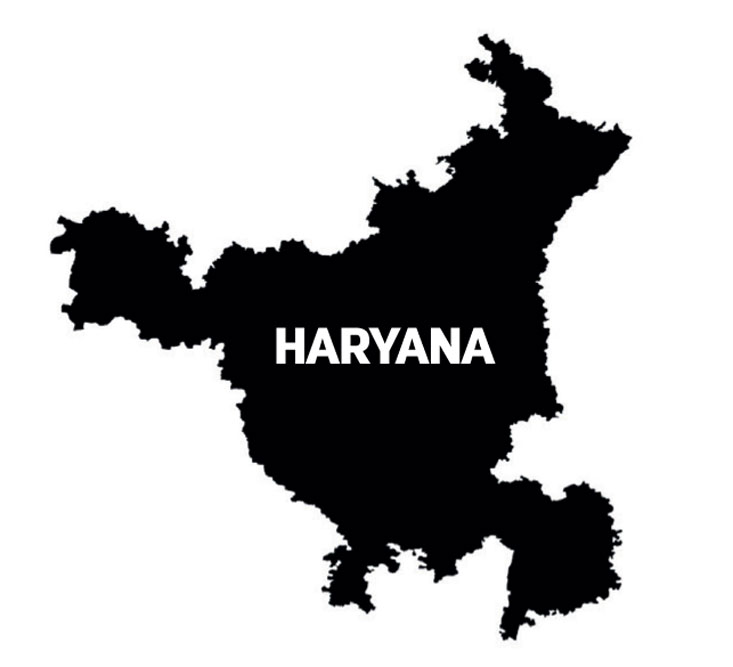
The company at a tea stall adjacent to the disrupted centre of Kosli is a mixed lot. In a crisp white kurta and trousers and polished black shoes that defy the dust and heat of a warm afternoon, Raju Yadav underlines the frustration of Kosli’s residents. “This tehsil has a large number of villages, including this town. Yet, we have been subjected to neglect with no solutions,” he says. The tea vendor Ballu Singh, a tailor working his machine behind them, and others gathered at the cart nod in agreement. Though accessible along the Mahendragarh-Jhajjar road, Kosli is part of southern Haryana’s ‘Ahirwal’, a region that demarcates the state’s Yadav belt. And though it lies within the northern tip of Rewari district, the settlement is part of the Rohtak Lok Sabha seat. In 2019, Congress leader Deepender Singh Hooda, son of former Chief Minister Bhupinder Singh Hooda, faced a large deficit here that helped the Bharatiya Janata Party (BJP) win. In 2024, while he won the Rohtak seat by a margin of over three lakh votes, Hooda Jr’s lead in Kosli was just two votes. The decline in BJP’s support does reflect the simmering discontent but the close contest makes discussants cautious about the outcome. “It looks like 50:50,” offers Raju.
A slackness that marked the BJP government’s second term with Manohar Lal Khattar at the helm, until he made way for Nayab Singh Saini in March this year, has eroded BJP’s popular support. The civic mess in Kosli is proof of a distracted political executive and an apathetic and corrupt officialdom. Yet, the reason the election may run close is the BJP’s government’s success in some areas like ensuring recruitments are free of the infamous parchi-kharchi (bribes for jobs) model that was Haryana’s bane. A leaked audio clip of local Congress leaders discussing how they will get “quotas” in job recruitment if the party wins provided BJP an opportunity to revive the debate. Then, as recently as July 16, the state government revised the criteria for exclusion of the creamy layer for backward classes. The creamy layer criterion for agricultural holdings applies to candidates with family farmlands that are 85 per cent or more irrigated within the ambit of the statutory land ceiling limit. There is a conversion formula for unirrigated land where at least 40 per cent of the total holding is irrigated. The income cut-off was hiked from ₹6 lakh a year to ₹8 lakh without adding salaries and agricultural earnings. While some experts felt the criteria would disadvantage the more deserving, there are benefits for backward communities like Yadavs. “The changes are welcome. Now children from better-off families can be part of the general category,” says Raju. There is the unstated factor that a Congress victory means Hooda will be chief minister, an outcome the Yadavs do not relish. Small and crowded Kosli is truly a swing seat, encapsulating the battle between BJP and Congress.
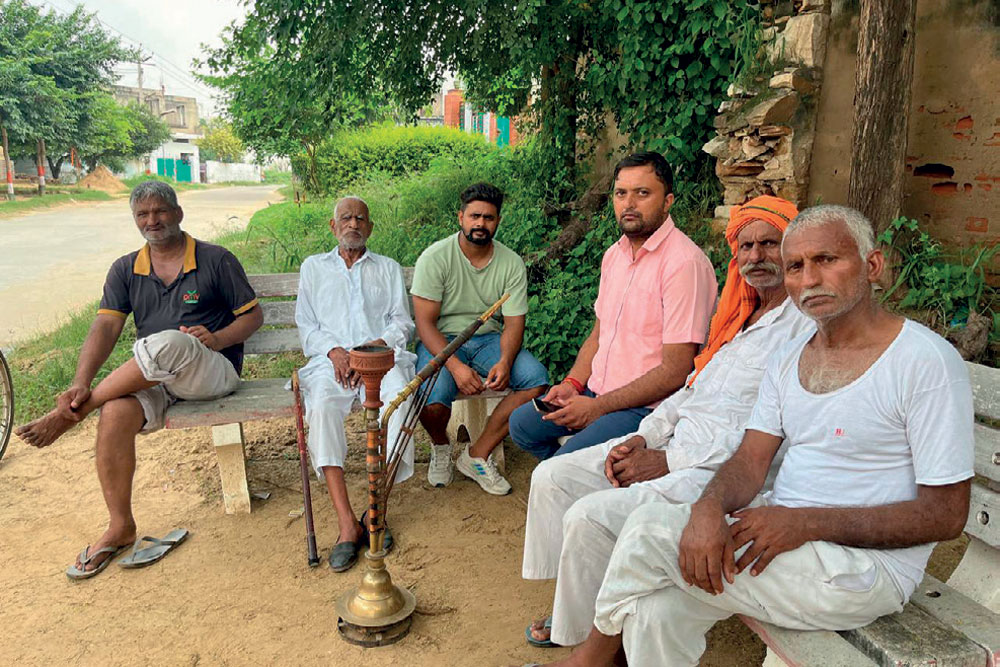
The 5-5 Lok Sabha result in 2024 read like a draw but was perceived a loss for BJP which won all 10 seats in Haryana in 2019. The slide, some feel, might have been steeper if Saini had not been brought in just ahead of the elections. Though not so well-known outside Haryana, the new chief minister is well received by many even though he has not had much time in the job. Sainis belong to the Other Backward Classes (OBCs) and the move was intended to solidify BJP’s OBC coalition in order to counter the disgruntlement of the Jat community, unhappy about its exclusion from the chief minister’s chair. A vocal and assertive community, Jats are estimated to be anywhere between 25-30 per cent of the population and see themselves as natural claimants to the chief minister’s office, not very unlike how Marathas are best represented among Maharashtra’s chief ministers.
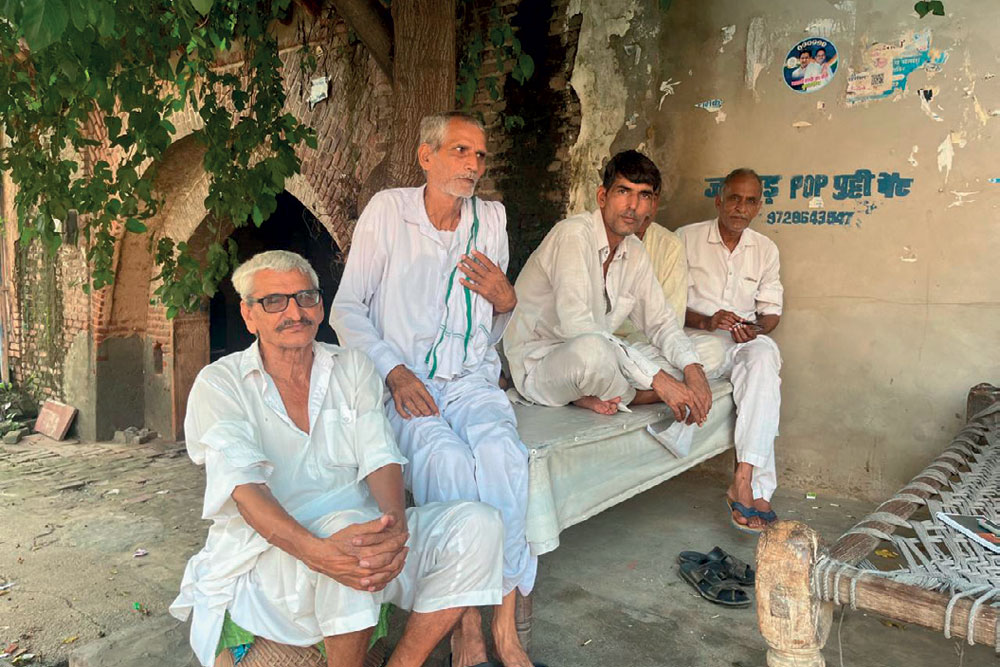
BJP’s political calculations do not run on Jat-centric lines, banking more on OBCs, Punjabis, the urban middle class, and a decisive section of Dalits. The last category is crucial as a drift of Dalit votes towards Congress was a key reason for the party doing well in the Lok Sabha polls. This is partly attributed to the Opposition successfully presenting BJP’s ‘400 par’ target as a plot to do away with reservations. Yet, the Dalit movement away from BJP predates the Lok Sabha campaign. There is a clear drop in support for BJP in reserved seats from the 2014 to the 2019 Assembly polls. BJP is going all out to win back its standing among Dalits, putting up candidates that reflect the distribution of Scheduled Castes (SCs). Union Home Minister Amit Shah reminds Dalit voters that they have been subjected to atrocities under Congress rule, a code for administrations headed by Jat leaders. It is no surprise that Prime Minister Narendra Modi hit the ground hard after returning from the US with a rally at Gohana where Dalit homes were burnt in 2005 after the murder of a Jat man. Investigation into the retaliatory violence by the Central Bureau of Investigation (CBI) failed with all accused acquitted in January 2012.
The state government has revised the criteria for excluding the creamy layer of backward communities, but with benefits for groups like Yadavs. Also, a Congress win means Bhupinder Hooda will be chief minister. It is an outcome the Yadavs do not relish
THE ROAD FROM Gurugram to Pataudi is testimony to the pace of urbanisation. Apartment complexes have sprung up till almost 10km to the town which gives this constituency its name. The roads are busy with the passage of trucks parked in large numbers at regular intervals. The route also reveals the size of Badshahpur constituency, one of the four that fall within Gurugram. The seat with more than five lakh voters is the largest in Haryana and much of it is outside ‘new Gurgaon’ and its high rises. The conversation here is not so much about uncollected garbage, but the power equations in rural society. Budh Ram Yadav is happy to get a hookah going and offers puffs alternately while making his views plain. This time round, he says, BJP has given the ticket to former minister Rao Narbir Singh who was excluded in 2019. “That is why a Jat won this seat in 2019,” he says, referring to Rakesh Daultabad, who won as an independent. Daultabad died recently and his wife is in the fray as an independent. Since Narbir Singh did not get the ticket, his people ‘ensured’ BJP lost the seat, he avers. Things will be different now. Budh Ram does not do too much, his sons and daughters being married and working. He is happy with what the land he owns delivers and the help his sons provide. His reason for voting BJP, apart from caste considerations, is the Modi factor. “He has not caused harm to anyone. On the other hand, he has improved India’s image,” he says. Given the social equations, Saini is a preferred choice even if the BJP MP from Gurugram, Rao Inderjit, a former Congressman, is not in the reckoning. It is also apparent that while his statements about his own eligibility for the chief minister’s job make BJP squirm, Inderjit is a force to reckon with and Congress has no one in its ranks to match him.
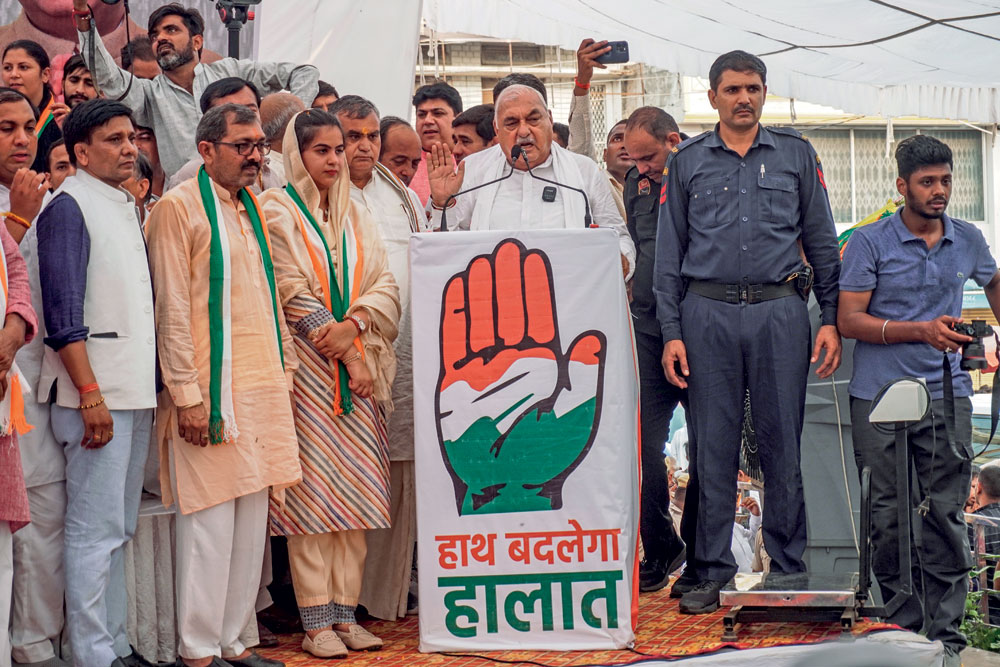
The mood is largely unchanged in Pataudi town itself, but some feel that issues like Agniveer, raised vigorously by Congress, have gained traction. It is felt the scheme suffers from the lack of pension and a too-short period of service. The BJP manifesto promising jobs to Agniveers who do not get absorbed in the armed forces is being considered by younger voters, but the response is tepid. A conversation on pre-election sops takes an interesting turn with the owner of an auto repair shop advising a visitor against succumbing to alcohol being handed out ahead of polling. “This is just a short-term choice. What will happen once elections are over?” he asks. The shortcomings of successive BJP governments are evident in the poor state of the road but memories of previous Congress governments are not pleasant either for older voters who recall instances of nepotism and corruption. BJP candidate Bimla Chaudhary, a former Congress member, contesting the reserved seat appears to be ahead of her rivals. Among other voters, the mood over issues like Agniveer is more forgiving and the argument that ‘mistakes’ can be corrected offers BJP a way out. Given BJP’s strong performance in the 2024 polls in Gurugram’s four Assembly segments, which ensured Inderjit’s win, the party is still in the reckoning for October 5.
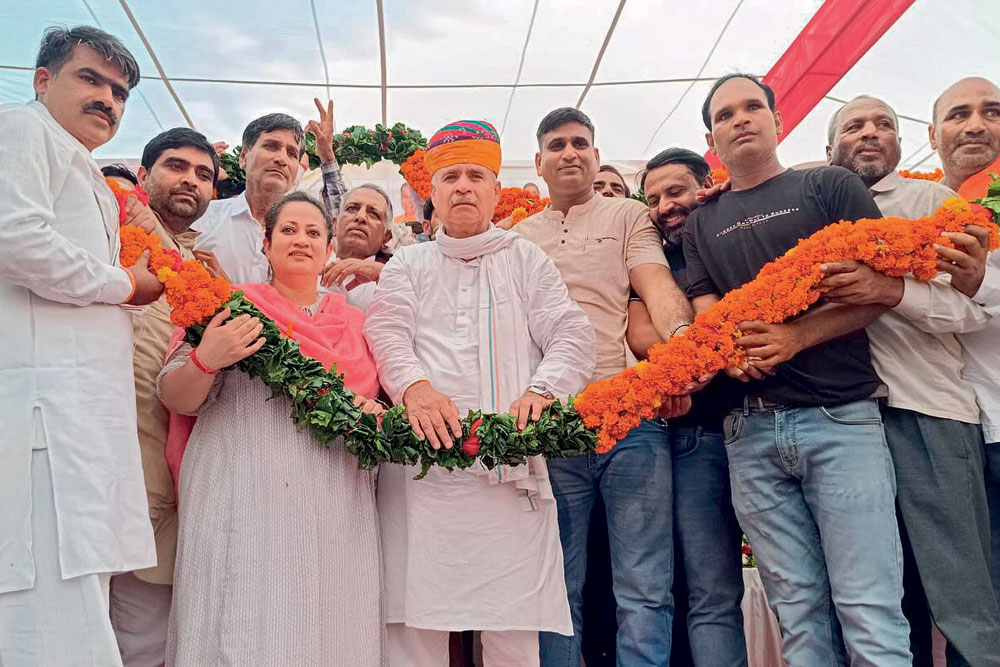
Rewari is the nerve centre of Ahirwal and the town is a hive of activity in the middle of a Monday. Bir Singh Yadav is not too busy though, as he sits in his auto spare parts shop. Rewari’s civic facilities, he agrees, need improvements. The roads need redoing and there are other problems too. The town has a thriving two-wheeler and car parts market, which attracts a lot of buyers keen to take advantage of better prices, straining Rewari’s capacities. He introduces Surendra Yadav, who runs a substantial medical equipment store nearby. Despite being the owner of a decent-sized establishment, Surendra Yadav is busy packing polythene bags meant for saplings himself and proves well-versed in local politics where a fierce contest is unfolding between BJP’s Laxman Yadav and Chiranjeev Rao, son of senior Congress leader Ajay Yadav. Rao won the seat in 2019 and is married to Anushka Yadav, daughter of former Bihar Chief Minister Lalu Prasad. The fight is pretty much a contest between old warhorses Rao Inderjit and Ajay Yadav. Surendra Yadav recalls the “Congress era” when the smallest of jobs needed a recommendation from the MLA or minister. “The visit of the leader was keenly awaited. Is he coming this week, or the next? People would queue up, asking for recommendations for routine needs and services,” he points out. The mood in Rewari does not favour Congress’ return, he insists. The sentiment is unchanged at Daulatabad, not far from Pataudi, where a group of older and younger men are satisfied with their conditions. Sandeep, Sanjay, Dharmpal and Sanjeev are all Yadavs. They are rooting for BJP and point out that issues like the farmers’ agitation have not touched southern Haryana. On the other hand, they feel the region was discriminated against when Congress held office, a charge not wholly without substance since Hooda’s power centre is Rohtak and he never got along with Inderjit.
The poll predictions are more mixed closer to Jhajjar, with even sections of non-Jat and non-Yadav voters, like a group of Brahmins at village Kasni in the Badli Assembly constituency, not inclined to support BJP. The assembly that identified itself as “Sharmas” is backing fellow-Brahmin Kuldeep Vats who won in 2019 and has been re-nominated by Congress. They are not overly animated by the prospects of Hooda becoming chief minister, but are going with the local choice even as they admit that the BJP nominee, a Jat named OP Dhankar, is no pushover and has made the contest spicy. Retaining its hold in Ahirwal is crucial for BJP’s prospects and reports of close contests in many parts of Haryana offer no comfort as they mark a diminution in support. Ensuring that it does not slip in southern Haryana needs to be complemented by better results in other parts. The electoral math has several variables and Modi’s campaign may prove critical to whether the winds of anti-incumbency are overcome or the seat of power changes hands.

/wp-content/uploads/2024/11/Cover-ModiFaith.jpg)








/wp-content/uploads/2024/11/FamilyFeud1.jpg)
/wp-content/uploads/2024/11/NewImpetus.jpg)
/wp-content/uploads/2024/11/Isolation3.jpg)

More Columns
Madan Mohan’s Legacy Kaveree Bamzai
Cult Movies Meet Cool Tech Kaveree Bamzai
Memories of a Fall Nandini Nair